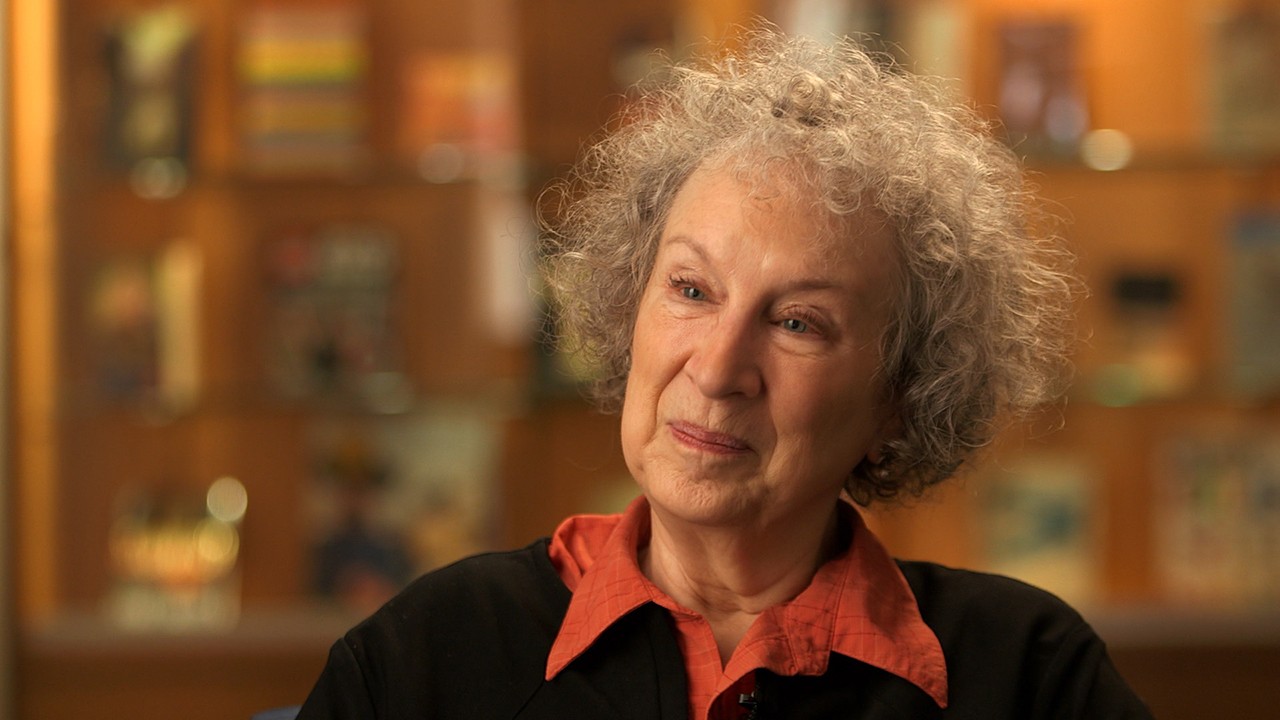Photo via Flickr user jamiesrabbits
William Moulton Marston's life sounds, frankly, exhausting. A man who had eight nonfiction books, three degrees, two major inventions, one silent movie, and a volume of erotic Caesar fan fiction to his name, he was hired and fired from university gigs at an almost impressive rate. He married his childhood sweetheart, but kept a long-term mistress in their home to raise the children—both those he fathered with the mistress and with the wife. (They made up a dead husband for the mistress to protect the kids.) Sometimes there was a third woman involved in their group sex.But out of Marston's many accomplishments, failures, and curiosities came at least one enduring creation: Wonder Woman. Born in 1893, Marston was spurred by his unique background to create a female superhero as an antidote to the "blood-curdling masculinity" of 1940s comic books. His views on love, bondage, and the impending matriarchy all shaped this Amazon warrior, but so did the women around him. They were suffragists and careerists who yearned for more than they were given—and at least one of them was related to Margaret Sanger.As a professor, Marston submitted his psychology students to all kinds of surveys and experiments. In one, he asked them if they'd rather be unhappy masters or happy slaves. (The guys overwhelmingly picked the former.) Another compared how men and women lie about their families, businesses, and love. One 1939 study determined that, actually, men preferred brunettes, the "natural man conquerers."Though he didn't always find it, much of Marston's work was obsessed with the truth. He also invented an early polygraph machine, and although his device was ruled inadmissible for court evidence in Frye v. United States, he found new spins for the lie detector in almost every new business venture. (At one point, he used it for a Gillette ad.) In time, his invention morphed into a sister device, a "love detector." Marston theatrically strapped this detector to attractive female students at press demonstrations, claiming to read which beau they liked best.
Watch: Margaret Atwood on Abortion, Twitter, and Predicting Everything We're Doing Wrong
Marston's detectors formed the basis for Wonder Woman's golden lasso of truth, but it was his extracurricular activities that proved much more formative for the heroine. From an early age, he was fascinated with the power of women. As Jill Lepore recounts in The Secret History of Wonder Woman, he saw the militant British suffragist Emmeline Pankhurst speak at Harvard in 1911 and was enthralled. His inner circle would soon include a collection of suffragists, birth control activists, and revolutionaries. Perhaps his most prominent link to this world was Olive Byrne, his mistress and the niece of Margaret Sanger.Marston and Byrne met at Tufts in 1925, with Marston the professor and Byrne the student. After she graduated, Marston moved Byrne into his home with Holloway. An arrangement was made: Holloway would work, Byrne would stay home with the children. Marston would go be a mad genius. When Byrne started having kids of her own and they worried about uncomfortable questions, she made up a dead husband, William Richard, even going by the name Olive Richard, which would become her byline for Family Circle, where she frequently wrote stories about William Moulton Marston, a brilliant scientist she pretended not to know.This free-love situation expanded whenever Marjorie Wilkes Huntley, another Marston mistress who would eventually do inking on Wonder Woman, was around. The foursome attended meetings together at Marston's weird hippie aunt Carolyn's apartment. Those meetings concerned "love units" consisting of "love leaders," "mistresses," and "love girls." There was also a lot of talk about submission, one of Marston's favorite subjects. His fascination is reflected in the early Wonder Woman comics, which include a surprising amount of bondage. Wonder Woman was constantly tied up by enemies. The medium wasn't always the same—rope, manacles, and tentacles were all in play—but it was the only thing that could truly incapacitate Wonder Woman. Her major weakness was having her golden bracelets bound by a man. This was called "Aphrodite's Law" and it played very well into Marston's belief that submission was essential to thriving relationships. But it didn't play quite as well into his heroine's image as an independent woman warrior.
Advertisement
Wonder Woman's origin story truly begins in a castle outside Boston. Specifically, the Moulton Castle. This was where Marston's mother grew up with her obscenely aristocratic family—one of them signed the Magna Carta—and it was only after she deigned to marry beneath her station that little William came into the world. He still had a true, blue-blooded education, though, sailing through Harvard three times, picking up a bachelor's degree in 1915, a JD in 1918, and a PhD in psychology in 1921. His wife, Sadie Elizabeth Holloway, attended Mount Holyoke for undergrad and Boston University for her law degree. ("Those dumb bunnies at Harvard wouldn't take women," she clarified.) Her MA from Radcliffe gave her three degrees to match her husband's set. But since Holloway could not find reliable work as a female lawyer in the late 1910s, she pursued jobs in publishing to support her husband in his sensational research. Although she was frequently the breadwinner, Marston made Holloway take his last name. She resented it.Read more: Theater Shuts Down Men's Tantrum Over Women-Only 'Wonder Woman' Screening
Advertisement
Watch: Margaret Atwood on Abortion, Twitter, and Predicting Everything We're Doing Wrong

Marston's detectors formed the basis for Wonder Woman's golden lasso of truth, but it was his extracurricular activities that proved much more formative for the heroine. From an early age, he was fascinated with the power of women. As Jill Lepore recounts in The Secret History of Wonder Woman, he saw the militant British suffragist Emmeline Pankhurst speak at Harvard in 1911 and was enthralled. His inner circle would soon include a collection of suffragists, birth control activists, and revolutionaries. Perhaps his most prominent link to this world was Olive Byrne, his mistress and the niece of Margaret Sanger.
Advertisement
Advertisement
The comic book panels depicting Wonder Woman bound or chained can also be directly linked to the pro-birth control illustrations and pamphlets that Byrne's mother and aunt illegally distributed. Chains were also a symbol of the suffragist movement—leaders had chained themselves to the gates of the White House to get Woodrow Wilson's attention in 1917. They were also a frequent object in Lou Rogers's political cartoons. Rogers worked at magazines like Judge and Sanger's The Birth Control Review. No matter the publication, she often drew women in shackles to symbolize their oppression. Her 1912 "Tearing Off the Bonds" illustration is frequently placed right next to an early Wonder Woman sketch to showcase the remarkable similarity. Lepore also prints a pointed Rogers cartoon in her book depicting a desperate woman chained to a heavy iron ball reading "Unwanted Babies."Marston firmly believed that a matriarchy was inevitable; in a two-hour interview at the Harvard Club in 1937, he predicted one would arrive in America by 2937. "The next 100 years will see the beginning of an American matriarchy—a nation of amazons in the psychological rather than the physical sense," he said. "In 500 years, there will be a serious sex battle. And in 1,000 years women will definitely rule this country." It was a natural leap from this thought to Paradise Island, the utopian home of Wonder Woman. This land, populated by Amazons liberated from Hercules, outlawed men but endorsed peace and lush greenery.In 1940, Marston's ideas all came together. He was hired as a consultant to Detective Comics (DC) thanks to a Family Circle article that caught publisher Maxwell Charles Gaines' eye. Marston had been interviewed about the potentially harmful effects of comics on young minds, a pressing concern at the time that Marston refuted. Can you guess who wrote the article?In 500 years, there will be a serious sex battle. And in 1,000 years women will definitely rule this country.
Gaines soon gave Marston permission to test out a new character, Wonder Woman, in All-Star Comics in 1941. She was merely a distraction from the main Justice Society of America story, but her inaugural appearance proved so popular that she earned her own series. Her bullet-deflecting bracelets came from Byrne, known for her bangles, while her "Suffering Sappho!" exclamations were all Holloway. Marston and his family worked diligently on his character for the next six years.In 1947, skin cancer claimed Marston's life. After that, Wonder Woman would take a number of regressive turns that her free-thinking creator would've loathed: She doted on Steve Trevor more, relinquished her powers, and at one point, opened a boutique. But just as first-wave feminists molded Wonder Woman, second-wave feminists helped break her out of comic book hell. Thanks in part to Gloria Steinem and the editors at Ms., Wonder Woman course-corrected in the early 1970s back to her World War II persona—the one shaped by an extremely odd man, his sister wives, and the cast of bohemians and firebrands that rotated around them.
